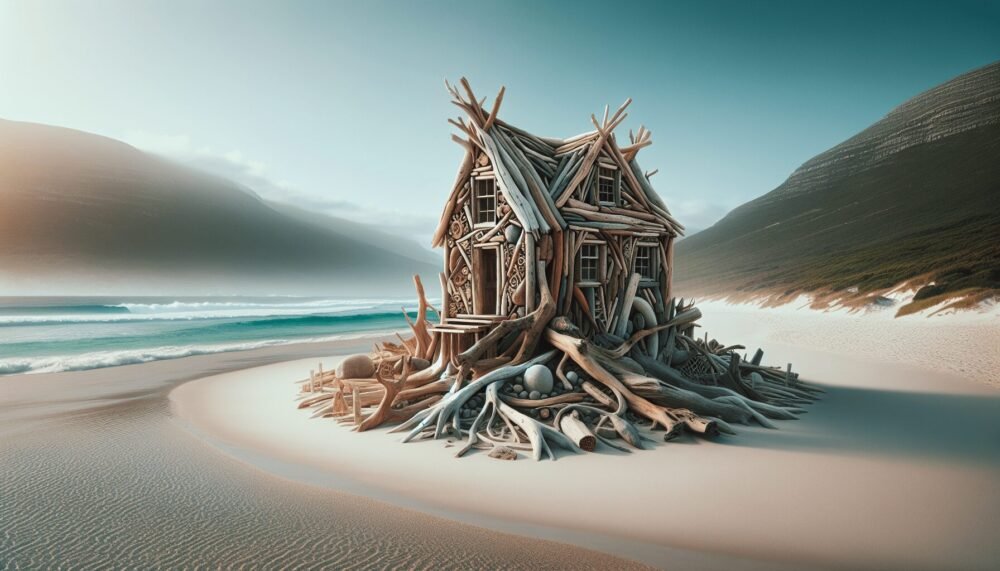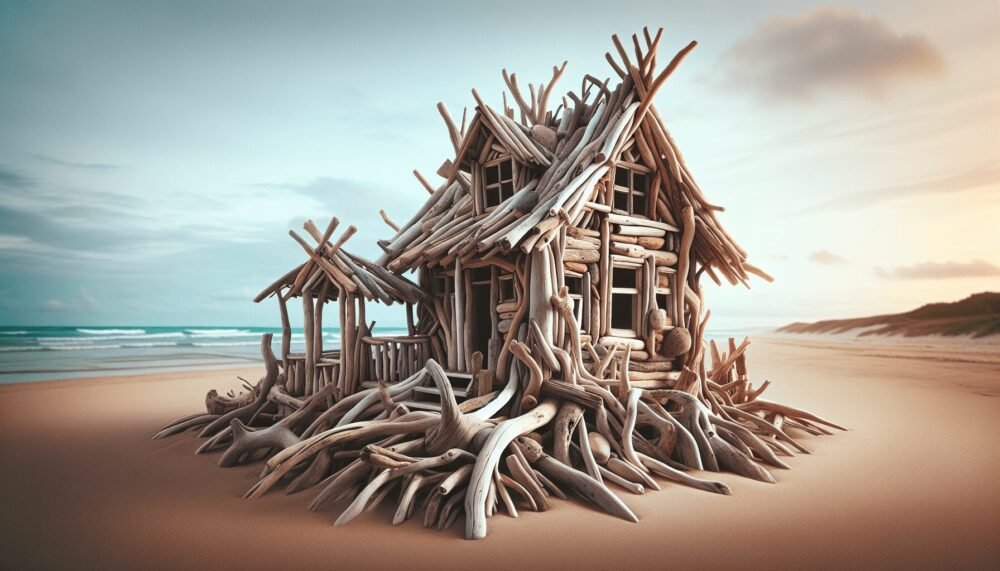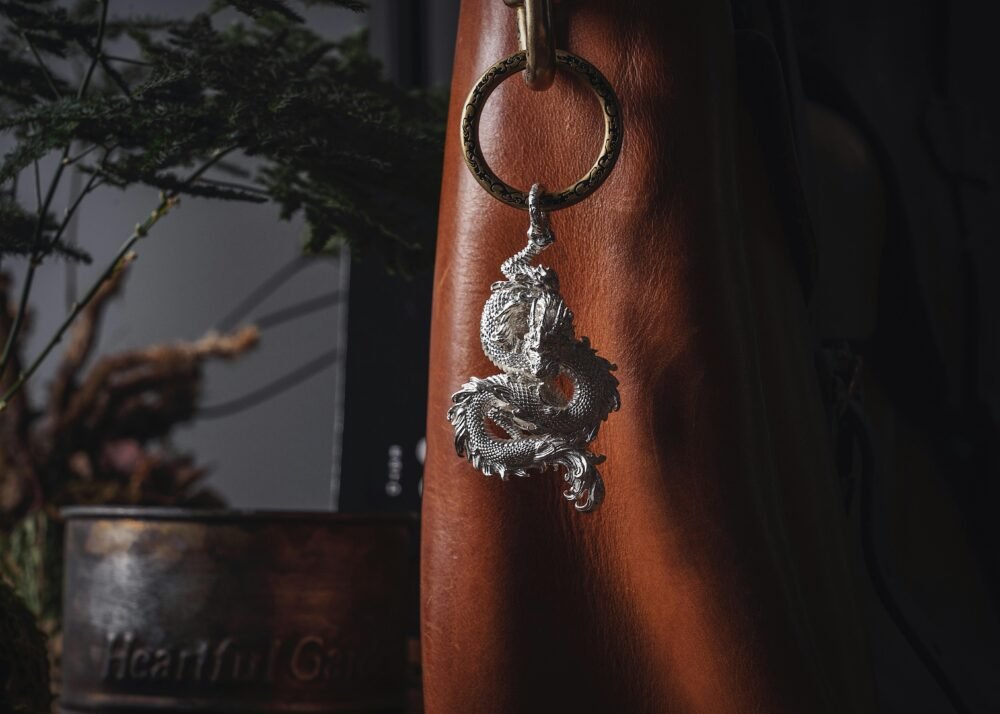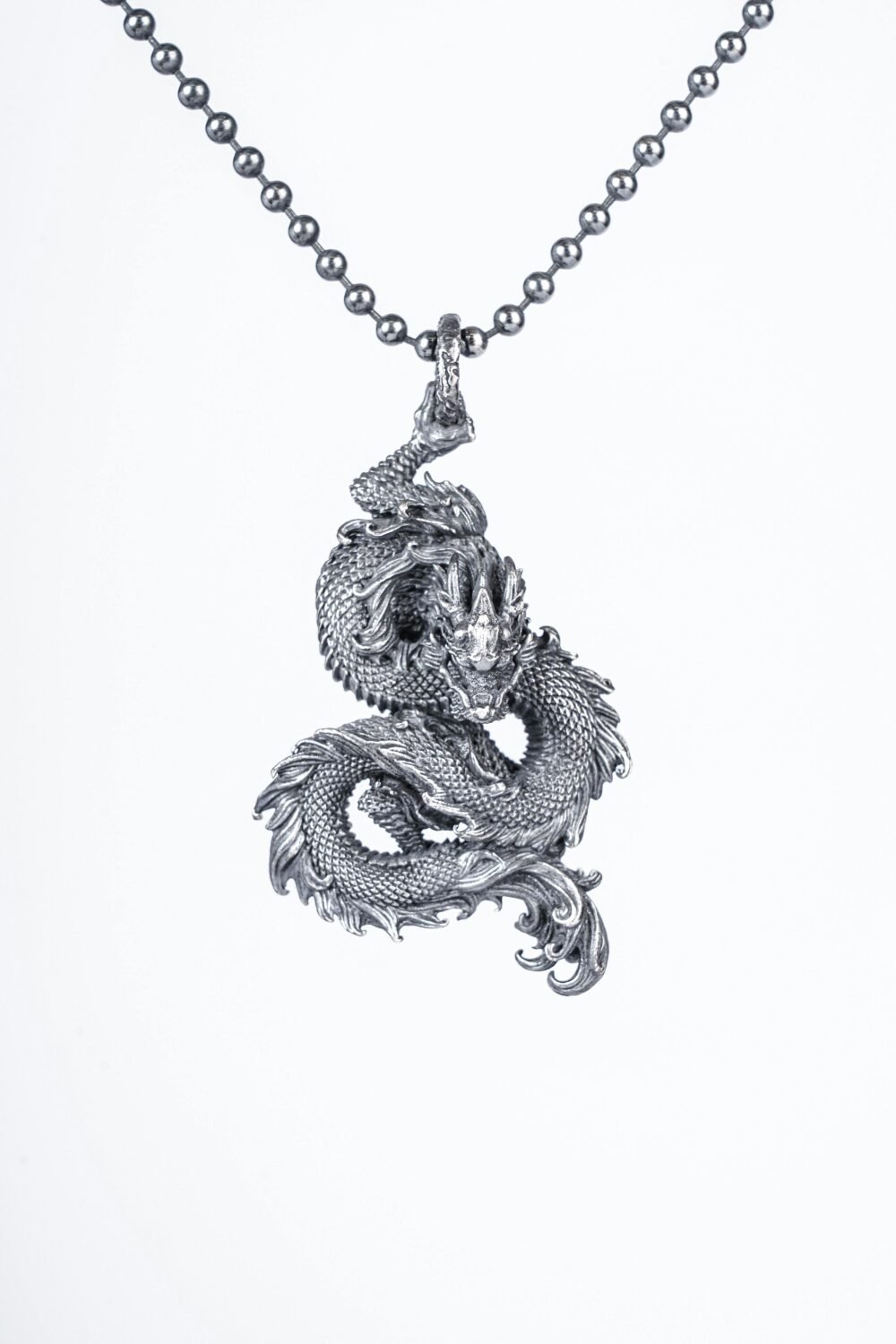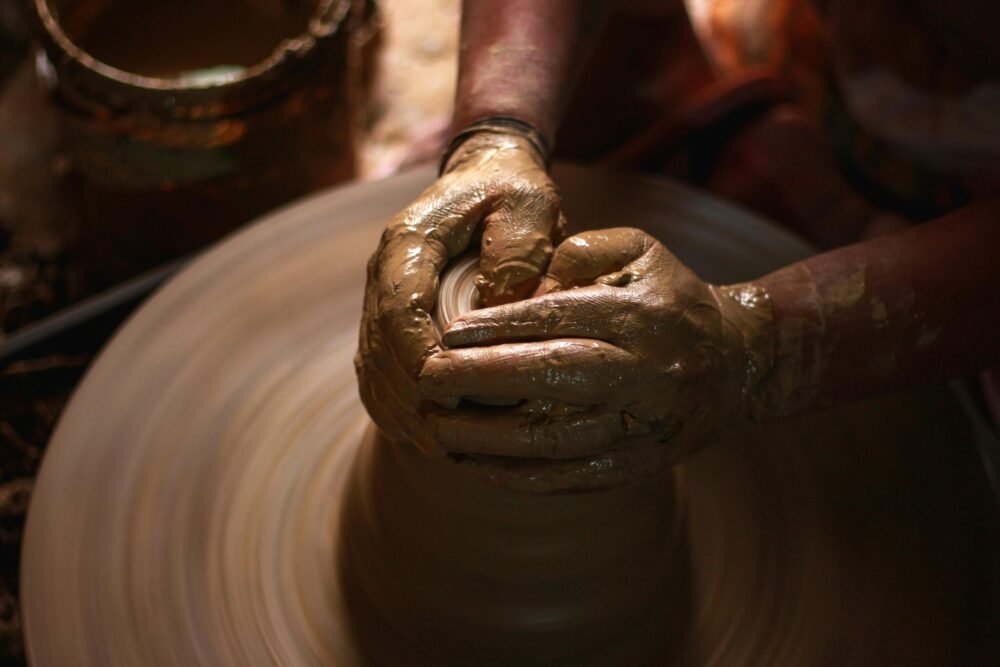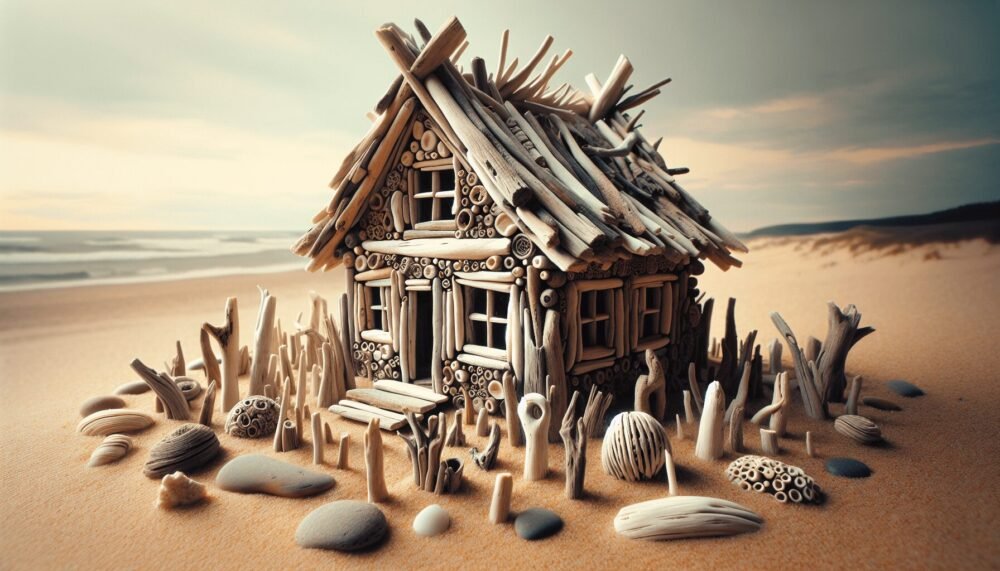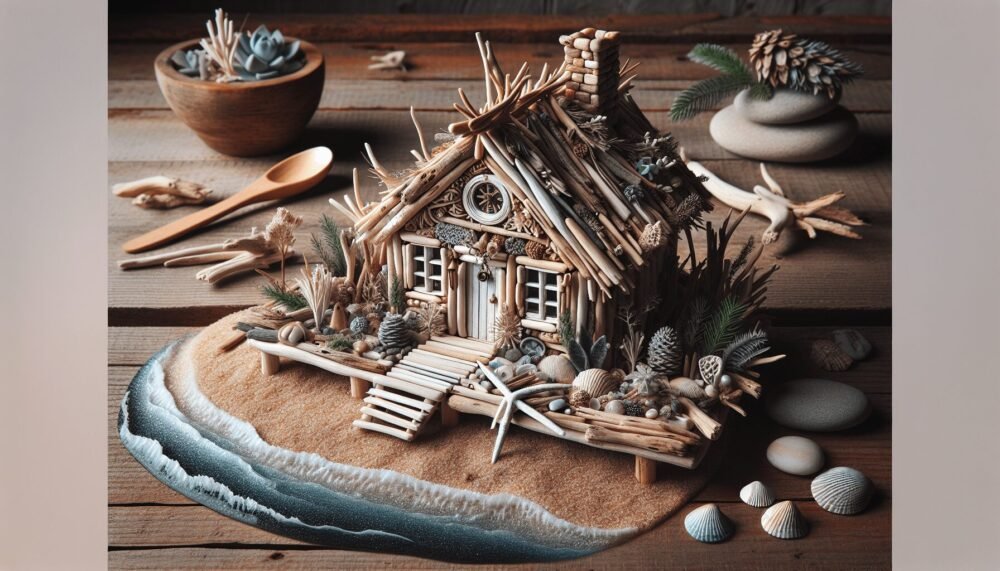Imagine walking along a sunny beach, feeling the warm sand between your toes, and stumbling upon a breathtaking sight: driftwood art painted beach houses. These charming, unique creations combine the whimsy of driftwood with the creativity of talented artists, transforming ordinary pieces of wood into extraordinary beachside abodes. Each house tells its own story, with vibrant colors and intricate designs that evoke a sense of wonder and tranquility. Join us on a journey as we explore the magical world of driftwood art painted beach houses, where imagination knows no bounds.

Introduction
Welcome to the fascinating world of driftwood art and painted beach houses! In this article, we will explore the unique and captivating medium of driftwood art, its history, and its importance as a form of artistic expression. We will also discuss the specific art form of painted beach houses, including how driftwood is incorporated into these charming creations. Whether you are a seasoned artist or simply have an appreciation for beach house decor, this comprehensive guide will provide you with all the information you need to understand, create, and care for your own driftwood art.
Understanding Driftwood Art
Definition of driftwood art
Driftwood art involves the creation of beautiful and imaginative pieces using wood that has been washed ashore by rivers, lakes, or the ocean. This unique medium offers artists a natural canvas with distinctive textures, shapes, and tones. By harnessing the inherent beauty of driftwood, artists are able to create stunning sculptures, furniture, and other decorative items.
History of driftwood art
The history of driftwood art can be traced back to ancient times when indigenous people utilized driftwood as a practical and artistic resource. In cultures around the world, driftwood was used to construct shelters, tools, and even religious artifacts. Over time, the artistic value of driftwood became more recognized, with artists embracing its natural aesthetic and incorporating it into their work.
Importance of driftwood as a medium
Driftwood holds a special place in the world of art due to its unique qualities. Each piece of driftwood carries a story, having been shaped by the elements and water over time. Its weathered appearance and distinct textures add depth and character to artistic creations. Furthermore, the use of driftwood contributes to sustainable art practices, as it repurposes materials that might otherwise go to waste.
Painted Beach Houses as a Form of Driftwood Art
Explanation of painted beach houses
Painted beach houses are a charming and whimsical form of driftwood art that combines the natural beauty of driftwood with the vibrant colors and designs of beach house decor. These miniature structures, often reminiscent of coastal cottages, are lovingly created and adorned with intricate details, painted scenes, and beach-inspired motifs. They serve as a delightful representation of coastal living and bring a touch of the beach to any home or space.
How driftwood is used in painted beach houses
Driftwood plays a crucial role in the creation of painted beach houses. It forms the foundation of these miniature structures, providing stability and a natural aesthetic. The unique shapes and textures of driftwood pieces add character and intricacy to the overall design. Driftwood may serve as the walls, roof, or even the foundation of the beach house, lending an organic and rustic feel to the final piece.
Popularity of painted beach houses in coastal communities
Painted beach houses have gained immense popularity in coastal communities for their ability to capture the spirit of seaside living. In beachside towns and resort areas, these charming miniatures are often found as keepsakes, souvenirs, or decorative pieces in homes and shops. The whimsical nature of painted beach houses resonates with beachgoers and enthusiasts of coastal aesthetics, making them a sought-after art form in such areas.
Choosing the Right Driftwood for Painted Beach Houses
Identifying suitable driftwood pieces
When selecting driftwood for painted beach houses, it is important to choose pieces that are both aesthetically appealing and structurally sound. Look for driftwood with interesting shapes, unique textures, and appealing patinas. Avoid pieces that are excessively damaged or rotted, as they may compromise the integrity of your artwork.
Considering size, shape, and condition
The size and shape of the driftwood pieces you choose will greatly influence the overall design and structure of your painted beach house. Consider the desired dimensions and style of your creation before selecting driftwood. Additionally, ensure that the driftwood is in good condition and free from pests or rot, as this will ensure the longevity of your artwork.
Preparation and treatment of driftwood
Before incorporating driftwood into your painted beach house, it is essential to properly prepare and treat the wood. This involves cleaning the driftwood, removing any dirt, sand, or debris, and allowing it to dry thoroughly. You may also choose to preserve the wood by treating it with a sealant or wood stabilizer, which will increase its longevity and protect against insects and weathering.

Painting Techniques for Driftwood Art
Types of paint suitable for driftwood
Selecting the right type of paint for your driftwood art is crucial in achieving desired results. Acrylic paint is a popular choice due to its versatility, quick drying time, and vibrant color options. It adheres well to the textured surface of driftwood and provides a durable finish. Additionally, chalk paint can be used to create a distressed or weathered look, adding to the natural appeal of driftwood art.
Choosing colors for beach house themes
When it comes to choosing colors for your painted beach houses, the coastal theme and the surrounding environment serve as excellent inspiration. Soft blues, sandy neutrals, and shades of green are often used to evoke the sea, sand, and lush coastal landscapes. Bright pops of yellow, coral, or turquoise can be incorporated to add vibrancy and whimsy to the overall design.
Applying paint to enhance the natural appearance of driftwood
In order to enhance the natural appearance of driftwood, it is important to apply paint with a light touch. Rather than completely covering the wood, use a dry brush technique to add color and highlights while allowing the natural colors and textures of the driftwood to shine through. This will create a harmonious blend between the painted elements and the rustic charm of the wood.
Design Inspiration for Painted Beach Houses
Beach-inspired motifs and patterns
When designing your painted beach house, draw inspiration from the beach itself. Incorporate motifs and patterns that evoke the seaside, such as seashells, starfish, waves, or sand dollars. These elements can be painted onto the driftwood surfaces or incorporated as part of the structure, such as a seashell-shaped window or a sunburst made of driftwood.
Coastal wildlife and marine themes
The beauty of coastal wildlife and marine creatures can add a touch of whimsy and charm to your painted beach houses. Consider painting images of seagulls, dolphins, or seahorses onto the driftwood surfaces. Alternatively, sculpt small creatures out of clay or polymer clay and affix them to the beach house, creating a delightful three-dimensional effect.
Nautical and seashore elements
Nautical and seashore elements are classic design choices for painted beach houses. Adorn your structures with miniature nautical flags, life preservers, or sailor’s knots. You can also incorporate seashells, driftwood pieces shaped like anchors, or even tiny fishing nets to further enhance the coastal aesthetic. These elements will transport you to the seaside and infuse your paintings with a sense of maritime adventure.
Creating Beach House Miniatures with Driftwood
Exploring smaller-scale driftwood art
For those who enjoy the intricacy and detail of smaller-scale art, creating beach house miniatures with driftwood is a fantastic option. These miniature structures, often no more than a few inches tall, allow for greater precision and creativity. Due to their smaller size, they can be used as decorative objects, jewelry pieces, or even playsets for children.
Materials and tools needed for miniature beach houses
To create beach house miniatures, you will need a few key materials and tools. These include driftwood pieces (scaled down for miniature structures), acrylic paints, brushes, fine-tipped markers or pens for adding details, and craft glue for affixing smaller decorative elements. Additionally, you may choose to use small decorative objects such as tiny seashells, beads, or mini figurines to further enhance the intricacy of your creations.
Tips for achieving realistic details
When creating beach house miniatures, attention to detail is key. Use fine-tipped brushes or markers to add tiny features such as windows, shutters, or shingles. Consider the scale of each piece and ensure that the proportions are realistic. Additionally, pay attention to color choices and utilize shading and highlighting techniques to create depth and dimension. Experiment with different textures and materials to mimic the appearance of wood, glass, or other building elements.
Sealing and Protecting Driftwood Art
Importance of sealing driftwood
Sealing driftwood is essential to protect it from the elements, insects, and general wear and tear. By applying a sealant, you can extend the lifespan of your driftwood art and preserve its natural beauty for years to come. Sealing the wood also helps to prevent unwanted moisture absorption and warping, ensuring that your artwork remains in pristine condition.
Choosing the right sealant
When selecting a sealant for your driftwood art, it is important to choose one that is compatible with both the paint used and the intended purpose of the piece. Polyurethane varnish or clear acrylic spray are popular choices for sealing driftwood. These options provide a protective layer without altering the appearance of the paint or the wood’s natural texture. Be sure to follow the manufacturer’s instructions for proper application.
Methods for enhancing durability
In addition to sealing the wood, there are several methods you can employ to further enhance the durability of your driftwood art. Applying a layer of clear wax or polish can add an extra protective barrier to the surface. You may also choose to reinforce any fragile or delicate areas with epoxy resin or wood filler. These measures will help to strengthen the structure and guard against potential damage.
Display and Care of Painted Driftwood Beach Houses
Incorporating beach houses into home decor
Painted driftwood beach houses are not only beautiful artworks but also versatile decor pieces. They can be incorporated into your home decor in various ways, depending on your personal style and the desired aesthetic. Place them on shelves, mantels, or side tables to add a touch of coastal charm to any room. They can also be arranged as a centerpiece on a dining table or grouped together on a wall to create a stunning gallery display.
Arranging and showcasing driftwood art
When arranging and showcasing your painted driftwood beach houses, consider creating a cohesive and visually appealing display. Play with different heights, sizes, and orientations to add interest and depth to the arrangement. You can also mix in other beach-inspired decor elements, such as seashells, jars of sand, or coastal-themed artwork. Experiment with different arrangements until you find the perfect composition that complements your space.
Maintaining and cleaning painted driftwood
To keep your painted driftwood beach houses looking their best, it is important to properly maintain and clean them. Use a soft, dry cloth or a small brush to gently remove any dust or debris that may accumulate over time. Avoid using harsh chemicals or abrasive cleaning agents, as they may damage the paint or the wood. Regularly assess the condition of your artwork and address any signs of wear or damage to ensure its longevity.
Exploring Driftwood Art Communities and Markets
Online driftwood art communities
One of the wonderful aspects of the internet is the ability to connect with like-minded individuals who share your passion for driftwood art. Online driftwood art communities provide a platform for artists to showcase their work, exchange ideas, and receive feedback from fellow enthusiasts. These communities often feature forums, galleries, and social media groups where artists and collectors can interact, learn, and support one another.
Local markets and exhibitions
If you prefer a more tangible experience, exploring local markets and exhibitions can offer a unique opportunity to immerse yourself in the world of driftwood art. Many coastal towns and cities host regular markets or exhibitions dedicated to showcasing local artisans, including driftwood artists. These events not only provide an opportunity to purchase unique pieces but also allow you to engage directly with the artists and gain a deeper understanding of their creative process.
Finding and supporting driftwood artists
Supporting driftwood artists is not only a way to acquire beautiful pieces of art but also a means of encouraging and preserving this unique form of artistic expression. When looking to purchase or commission driftwood art, consider seeking out local artists or visiting reputable galleries that specialize in driftwood. By directly supporting these artists, you contribute to the continued growth and recognition of driftwood art as a valuable and cherished art form.
In conclusion, driftwood art and painted beach houses offer a delightful fusion of natural aesthetics, artistic expression, and coastal charm. Whether you are captivated by the inherent beauty of driftwood or inspired by the whimsical allure of painted beach houses, this article has provided you with a comprehensive guide to understanding, creating, and caring for these unique art forms. So go ahead, unleash your creativity, and embark on your own driftwood art journey. Your painted beach houses will undoubtedly bring joy, warmth, and a touch of the seaside to your life and surroundings.
